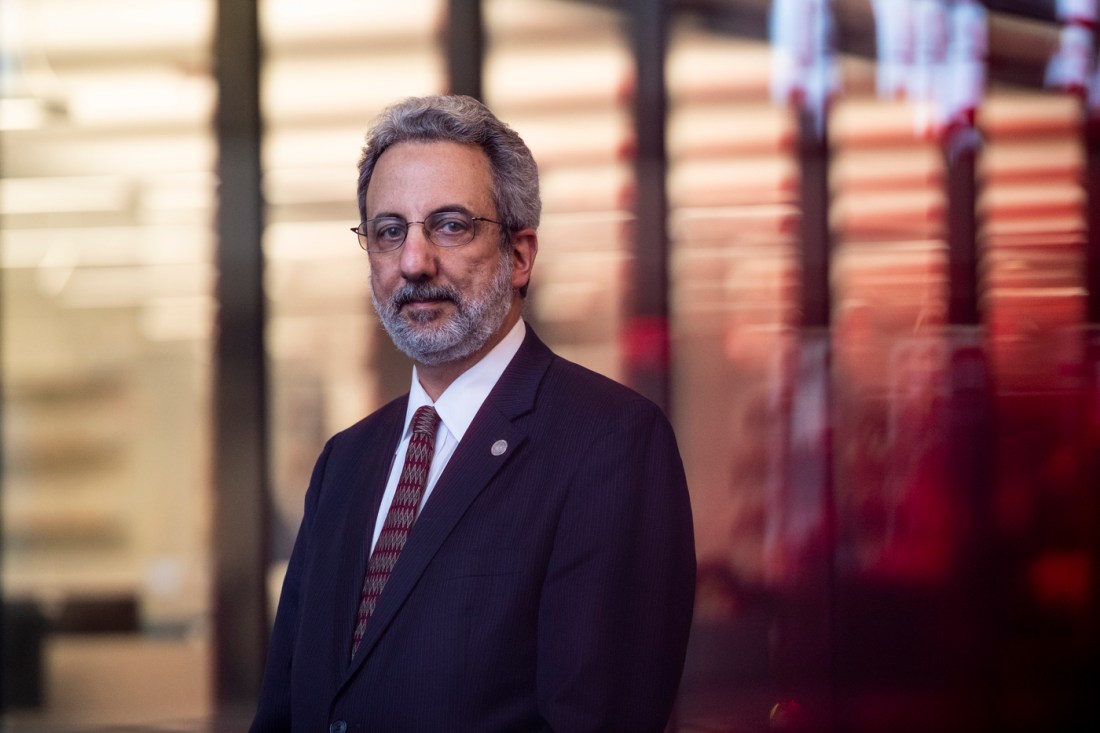The civil engineering profession is facing a revolution in thinking, says Jerome Hajjar, CDM Smith Professor and chair of civil and environmental engineering at Northeastern University.
Over the past two decades, Hajjar has worked “to develop systems that are more sustainable and more resilient,” he says. Now, his goal is “to help shift the whole profession to have sustainability, resilience and equity as the premier design objectives.”
What this means is prioritizing construction methods that can both withstand extreme events and use “radically less energy” in their production.
In terms of resilience, Hajjar imagines “structures [that are] able to bounce back quickly and be quickly reoccupied.” After an earthquake, for example, a resilient structure would soon become safe again for human habitation.
“From there you could start to think about resilient communities. If enough of our structures are resilient,” he continues, “the infrastructure and the community [also] starts to become more resilient.”
But sustainable production processes are also key, he says. “About 40% of all greenhouse gas emissions, about 40% of all pollution and about 40% of all waste [comes from] construction,” Hajjar says, while the transportation and industry sectors each account for about 30% of energy use.
Therefore, “civil and environmental engineering has a huge role to play on these issues,” he continues.

Hajjar has come to be recognized as a thought leader on these topics. On March 21 he delivered a keynote speech — “The Stability of Resilient and Sustainable Structures” — to nearly two thousand attendees of the American Institute of Steel Construction (AISC) annual conference.
This year’s conference was a combined event that also included attendance from the Structural Engineering Institute (SEI, of which Hajjar serves as president) and the Structural Stability Research Council (SSRC).
In recognition of his efforts to continually “push the industry forward,” Hajjar received two prestigious awards, the AISC Special Achievement Award and the SSRC Beedle Award, named in honor of Lynn S. Beedle.
“Lynn Beedle was a great structural engineer and professor,” Hajjar recalls. “I knew him when I was young in my career. He was a pioneer and a leader. He founded an organization called the Council on Tall Buildings and Urban Habitat.”
On the SSRC’s website, it says that the Beedle Award is granted only to “a worldwide leading stability researcher or designer of structures with significant stability issues, a leader in fostering cooperation between professionals worldwide, significant contributions to national and international design code development.”
Hajjar received the AISC Special Achievement Award in recognition of “research that drove impactful changes to standards governing the use of metal deck diaphragms in steel structures,” the organization wrote on its website.
“Professional service is important to me,” Hajjar says, but “it’s been a gradual evolution. I certainly did not get involved with any expectation that, for example, I would be president of the Structural Engineering Institute someday.”
Instead, Hajjar identifies three important reasons to get involved in a professional organization: “first is to give back to the profession that has given me so much,” he says. The second, he continues, is that “it’s an opportunity to work with some of the great minds in our profession, nationally and internationally.”
“But perhaps most importantly,” he concludes, “as a university professor, bringing our ideas into the world and working to have impact is very important to us.” Professional service and engagement puts those ideas and research into practice.
“I’ve worked to develop new structural systems that can bounce back quickly after extreme events,” Hajjar says, as well as “systems that ideally use radically less energy and therefore create fewer greenhouse gas emissions, less pollution and less waste.”
But to make systems like these commonplace, that’s “going to take a whole profession working on these ideas — many ideas — in order to shift how we do things.”
Noah Lloyd is a Senior Writer for NGN Research. Email him at n.lloyd@northeastern.edu. Follow him on X/Twitter at @noahghola.
